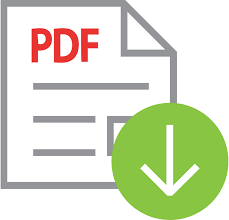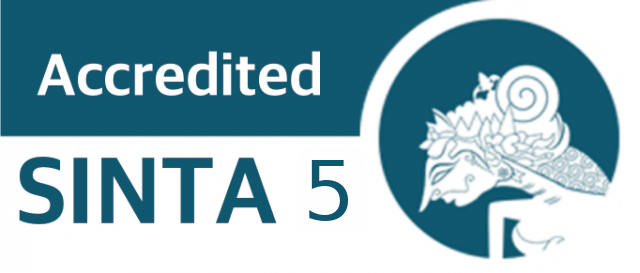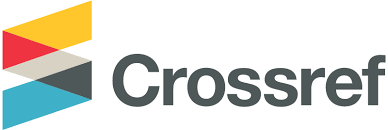Politeness Strategies in Directive Speech Act in The Greatest Showman (2017) Movie
 ), Nur Rosita(2),
), Nur Rosita(2), (1) Universitas Negeri Padang
(2) Universitas Negeri Padang
 Corresponding Author
Corresponding Author
Copyright (c) 2023 Monika Tagugurad, Nur Rosita
DOI : https://doi.org/10.24036/ell.v12i1.119864
Full Text:
 Language : en
Language : en
Abstract
Language as a means of communication always develops overtime. The value of politeness implied in the language. Furthermore, in interpreting the politeness value of a language, situational context has strong function to be considered. This cannot be separated from the speakers’ ways to express language with the politeness standard so that impact the listener's tendency to interpret the politeness value without seeing the situation affects it. The research purpose is to find out the types of politeness strategies and situational context that affects it in directive speech act in the Greatest Showman movie script. The researcher use qualitative method. The result was the five politeness strategies namely bald on record 42 data (29 %), positive politeness 61 (42 %), negative politeness 34 data (23 %), and bald off record 8 (6 %) where in each of these politeness strategies the component of speech appears as a situational context that influences. Additionally, the result show that the movie illustrates The Greatest showman movie as a motivational contains more positive politeness strategy which relates to the movie background that occurred in 19th century society, it is still valuable to uphold family values and respect for others according to their social class.
Keywords
References
Andri Sirubian. (2016). An Analysis Of Politeness Strategy
In Soimah Talkshow In TRANS TV. Episteme Journal of linguistics and Literature: English Department Language and Art Faculty –UHN
Anggita Sari Pramiardhani. (2010). An Analysis Of Positive Politeness Strategy Employed By The Characters In The Movie Entitled “Big Fish”(A Pragmatics Study). Faculty of Letters and Fine Arts; Sebelas Maret University
Ary, D., Jacobs, L. C., & Razavieh, A. (2002). Introduction to research in education (6th. ed.) Belmont: Wadsworth Thomson Learning
Brown and Levinson. 1987. Politeness Some Universals in Language Usage. London: Cambridge University Press.
Darnawati, Oktariza, D., Magria, V. (2019). ymes’ SPEAKING Factors Analysis in La La Land
Darnawati., Dodi Oktariza., Vera Magria. (2019). Hymes’ SPEAKING Factors Analysis in La La Land film by Damien Chazelle: Ethnographical Study. Jurnal Linguistic Budaya, volume 4 No 1, 2019
Della, F., Sembiring, B. (2018). An Analysis of Directive Speech Acts by Searle Theory in “Sleeping Beauty” Movie Script. Journal of English Education and Teaching (JEET) Vol.2.No.1.2018 Page 22 of 85
Denzin, N. K., & Lincoln, Y.S. (2005). The handbook of qualitative research (2nd ed.). London: Sage Publisher
Duranti, A. (1985), Sociocultural Dimensions of Discourse, In Van Dijk, T. A. (ed), Handbook of Discourse Analysis, London: Academic Press Limited, pp. 193-230.
Fasold, Ralph W. 1996. The Sociolinguistics of Language. Cambridge: Blacwell film by Damien Chazelle: Ethnographical Study. Jurnal Linguistik Budaya. Vol 4, No 1 (2019)
Holmes, Janet. 2001. An Introduction to Sociolinguistics. Essex, London: Pearson Education Limited.
Levinson, S. C., (1983). Pragmatics. Cambridge: Cambridge University Press
Levinson, S.C. 1985. Pragmatics. Cambridge: Cambridge University Press
Mansoor, Iman Kareem. 2018. Politeness: Linguistic Study. International Journal of Research in Social Sciences and Humanitis. IJRSS) 2018, Vol. No. 8, Issue No. IV, Oct.
Meiratnasari, A., Wijayanto, A., & Suparno (2019). An analysis of Politeness strategies in Indonesian English Textbooks. ELS Journal on Interdisciplinary Studies in Humanities, 2(4), 529-540
Mey, Jacob, L. 1993. Pragmatics: An Introduction. Oxford: Blackwell Publishers
Mu’in, F. (2019) Sociolinguistics A Language Study in Sociocultural Perspectives. Jurusan Pendidikan Bahasa dan Seni, Fakultas Keguruan dan Ilmu Pendidikan, Universitas Lambung Mangkurat. ISBN 978-602-53643-1-0
Oktadistio, F., Mazrul Aziz, Zahrida. An Analysis of Direct And Indirect Speech Acts Performed By Main Character In The Movie Revenant Script. Journal of English Education and Teaching (JEET) Vol.2.No.1.2018 Page 59 of 85
Oktavia, Masitoh, et.al. (2019). Politeness Strategies in Directive Speech Acts in a Short Movie “Mind Your Language. Advances in Social Science, Education and Humanities Research, volume 443
Restuadi, Y., & Ardi, H., 2021. An Analysis of Politeness Strategies in Directive Speech Act Used by Main Character in Green Book Movie. E-Journal of English Language and Literature Volume 10 No. 3. P. 35
Searle, J. (1987). Speech Act. Melbourne: Cambridge University Press
Sirbu, A. 2015. The Siginificance of Language as A Tool of Communication. Mircea cel Batran” Naval Academy Scientific Bulletin, Volume XVIII – 2015 – Issue 2 Published by “Mircea cel Batran” Naval Academy Press, Constanta, Romania
Sudaryanto. (1993). Metode dan Aneka Teknik Analisis Bahasa: Pengantar Penelitian Wahana Kebudayaan secara Linguistis. Yogyakarta: Duta Wacana University Press
Thomas, Jenny. 1995. Meaning in Interaction: An Introduction to Pragmatics. NewYork: Longman Group Limited
Togatorop, F. 2019. Politeness Strategies Used in the Conversation between the Students of Finance and Banking Department in Murni Sadar Polytehnic Pematangsiantar. Journal of English Teaching as a Foreign Language. Volume 5, Issue 1: June 2019. Pp. 37-44.
Vakili, E.Z., Alireza F. Kashani, Farhad Tabandeh. (2012). The Analysis of Speech Events and Hymes’ SPEAKING Factors in the Comedy Television Series: “FRIENDS”. New Media and Mass Communication, Vol 2, 2012
Wardhaugh, R. (2006). An Introduction to Sociolinguistics (5th ed.). Malden, MA: Blackwell Publishing.
Wardhaugh, Ronald, 1986. An Introduction to Sociolinguistics. Oxford: Basil Blackwell Ltd.
Yule, George. 1996. Pragmatics. Hawai: Oxford University Press
 Article Metrics
Article Metrics
 Abstract Views : 377 times
Abstract Views : 377 times
 PDF Downloaded : 156 times
PDF Downloaded : 156 times
Refbacks
- There are currently no refbacks.
Copyright (c) 2023 Monika Tagugurad, Nur Rosita

This work is licensed under a Creative Commons Attribution-NonCommercial 4.0 International License.












